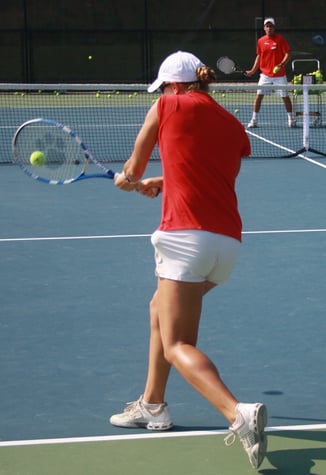Synopsis: Blame it on the fact the cost of a college education has obtained a permanent place on the escalator to infinity. Blame it on the fact the plethora of sports-related cable/satellite channels are so hungry to fill vacant viewing hours athletic participants of every intercollegiate sport offered are capturing their version of Warhol’s 15 minutes of fame. Whatever the reason, there continues to be an upsurge in the efforts put forth by high school student-athletes (and parents) to reach the promised land of a secure college athletic scholarship. 
Reality is the best starting point when discussing athletic scholarships. A University of Washington study found 59 percent of high school varsity football players believe they will receive an athletic scholarship upon graduation. In reality, only two percent of all high school athletes will participate collegiately in any sport. A snapshot of NCAA Division I and Division II sports offerings put the number of athletic scholarships in the vicinity of 138,000. Break that down further by looking at the number of high school girls track athletes (over 600,000) and the number of collegiate track scholarships in those two NCAA divisions (4,500), and the sting of reality is even greater. Only four NCAA sports offer complete scholarships, also referred to as ‘full rides,’ a fact which also needs to be understood.
Those realities aside, there are still opportunities for those student-athletes not considered among the elite in their respective sports. Regardless of whether the student is an elite athlete, academics cannot be discounted. Intercollegiate athletic recruiters want to see how successful student-athletes are in the classroom, as well as ACT and SAT scores. A gymnast with a 3.4 GPA is likely to get the nod over a recruit of similar athletic ability who carries a 2.7 GPA. Recruiters will also ask classroom-related questions such as:
· How much does the student-athlete participate in class discussion?
· Do teachers consider the student-athlete responsible and committed?
· Are homework assignments turned in on time?
· Is the student-athlete self-motivated?
College recruiters want to fill rosters with student-athletes who have the focus and motivation to earn a degree. They want athletes who will commit to athletic and academic disciplines.
Student-athletes need to be involved with other extracurricular activities –besides sports. Leadership is also a big part of being a team member. Holding a position in student government or being a part of a thespian group may show the initiative a college coach seeks in a player.
Student-athletes need to inform their high school coaches early on about their desire to play collegiately. It is common for high school coaches to ask players after the freshman year of their intent on playing an intercollegiate sport. If a coach does not do this, the student-athlete must take the initiative and initiate the conversation about playing the sport at the college level.
It is important for the student-athlete to research the universities that interest him or her. At this step, parents and student-athletes must become realistic. Look at schools that will fit the athletic and academic levels of the student-athlete. Ask the high school coach for input. Good high school head coaches will assist players in initial contacts and introduction packets to be sent via email. Recruiting visits are not limited to major universities. After narrowing down the potential colleges to attend, schedule a visit during the student-athlete’s junior year. Interested college recruiters may also make such invitations if there is mutual interest.
Even if the student-athlete is not expecting to be recruited at Division I or II universities, do not forget to register with the NCAA Clearinghouse. A college recruiter may see something in a student-athlete that a parent or the player may not recognize. Not being registered with the clearinghouse process could result in a lost opportunity for the student-athlete.










.png)
.png)
.png)
.png)